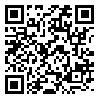Volume 5, Issue 3 (Journal of Science and Technology of Greenhouse Culture 2014)
2014, 5(3): 37-48 |
Back to browse issues page
1- Dept. of Hort. Sci., College of Agric., Isfahan Univ. of Technol., Isfahan, Iran.
2- Dept. of Hort. Sci., College of Agric., Shiraz Univ., Shiraz, Iran. ,maryam_mozafariyan@yahoo.com
2- Dept. of Hort. Sci., College of Agric., Shiraz Univ., Shiraz, Iran. ,
Abstract: (7032 Views)
Silicon (Si) is one of the beneficial elements for plants, which improves quantity and quality of yield, decreases evaporation and transpiration and enhances plant resistance to abiotic stresses. In order to evaluate the effect of Si and nano-silicon (N-Si) on growth, morphological and photosynthesis attributes of tomato, cultivar Falcato, an experiment was carried out in a hydroponic system, based on a completely randomized design, with two Si and N-Si levels (1 and 2 mM) and Si-free nutrient solution (as control), and four replications. Such traits as chlorophyll index (SPAD), photosynthesis, nutrient uptake, stem diameter, relative water content and morphological changes like density of trichomes were measured during the experiment. At the end of the experiment, fresh and dry weights and root volume were measured. Results revealed that Si was more effective than N-Si on fresh weight and mesophyll conductance. Concentrations of 1 and 2 mM Si increased fresh weight and mesophyll conductance, respectively. However, this concentration did not affect dry weight and relative water content significantly. N-Si was more effective than Si on photosynthesis and photosynthetic relative water content. The highest photosynthesis and lowest transpiration rate was measured in 2mM N-Si. Application of Si and N-Si decreased relative water content and the least water uptake was in 2mM N-Si treatment. In conclusion, Si or N-Si, with 20-30 nm particle diameter and optimum tomato growth conditions (without abiotic stresses) increased photosynthesis, fresh weight, relative water content and decreased nutrient solution uptake under hydroponics.
Type of Study: Research |
Received: 2014/09/29 | Accepted: 2014/09/29 | Published: 2014/09/29
Received: 2014/09/29 | Accepted: 2014/09/29 | Published: 2014/09/29
Send email to the article author
| Rights and permissions | |
 |
This work is licensed under a Creative Commons Attribution-NonCommercial 4.0 International License. |








